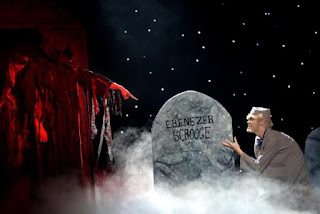California’s textbook example of weather whiplash
This year, California experienced its worst and most expensive wildfire season on record. This surprised many, because while the state recently had its worst drought in over 1,200 years, the 5-year drought ended in 2016. However, California was hit by the opposite extreme in 2017, with its wettest rainy season on record.
Though it seems counter-intuitive, the wet season contributed to the state’s wildfires. The resulting vegetation growth created fuel for the 2017 fire season, particularly after being dried out by high temperatures. 2017 was the hottest summer in record on California, breaking the previous record set just last year by a full degree Fahrenheit. As Stephen Pyne put it, “Whether it’s exceptionally wet or exceptionally dry, you’ve got the material for a fire in California.”
California’s wildfire season normally ends in October – big wildfires are relatively rare in November and December. But fires are raging in Southern California two weeks shy of Christmas, impossible to contain due to intense Santa Ana winds, creating hellish scenes.
This was predicted by climate scientists
A 2006 study published in Geophysical Research Letters found that global warming would push the Southern California fire season associated with Santa Ana winds into the winter months. As a 2015 study published in Environmental Research Letters found, Santa Ana fires are especially costly because of the speed at which they spread due to the winds and their proximity to urban areas. That study concluded that the area burned by Southern California wildfires will increase by about 70% by mid-century due to the drier, hotter, windier conditions caused by global warming.
A 2010 study published in Forest Ecology and Management found that global warming may extend the fire season year-round in California and the southwestern USA. These December fires will become more commonplace in a hotter world. We’re literally getting a glimpse at Christmas future, and though there are other factors at play, human-caused global warming is largely to blame.
A 2015 special report in the Bulletin of the American Meteorological Society found that “An increase in fire risk in California is attributable to human-induced climate change.” A 2016 study in the Proceedings of the National Academy of Sciences found that human-caused global warming doubled the area burned by wildfires in the western USA over just the past 30 years.
Add to that a new study just published in Nature Communications finding a connection between Arctic sea ice and high pressure ridges of California’s coast that can block storms from passing over the state. These results suggest that as Arctic sea ice continues to disappear due to global warming, California may see less rainfall and thus even worse droughts, which along with higher temperatures would lead to worse wildfire seasons.
Scrooge changed - will Trump and Republicans?
Read more at California's Hellish Fires: a Visit from the Ghost of Christmas Future

No comments:
Post a Comment